1 Title

2 Organisation

3 Lecture overview

4 Graphs! They’re everywhere

5 What are graphs?

6 What are graphs?

7 Graphs as geometry.

8 1) Classifying graphs

9 2) Classifying nodes
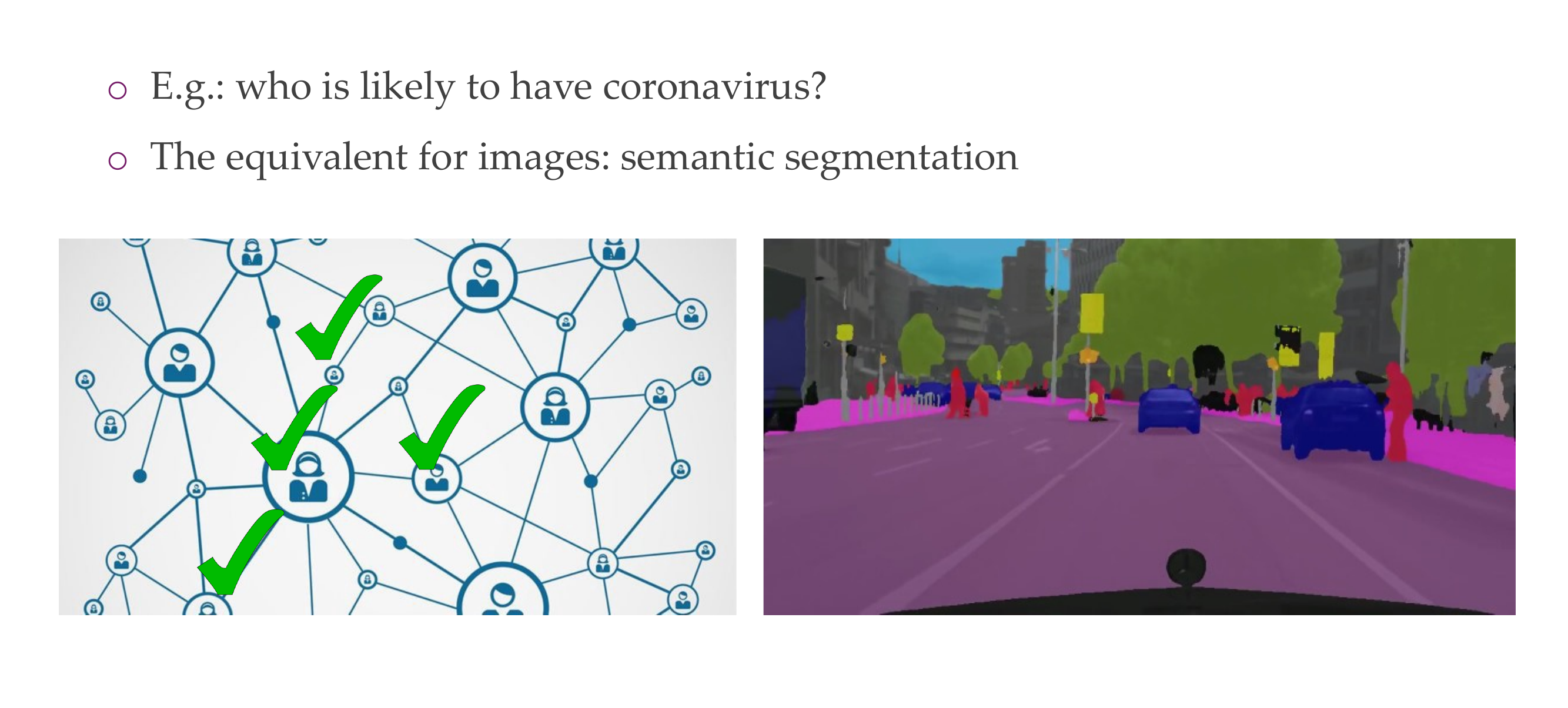
10 3) Graph generation

11 4) Link/Edge prediction

12 Three tasks visualized: here with nodes that carry features

13 Graphs can be static, varying, or even evolving with time

14 Regular structures vs graphs

15 Title

16 Directed graphs

17 Undirected graphs

18 Graph neighborhood

19 Attributes

The attention score is measured by these softmax
The dot product here it ends up being 2x3 again

20 Adjacency matrix

21 Adjacency matrix for undirected graphs

22 Weighted adjacency matrix
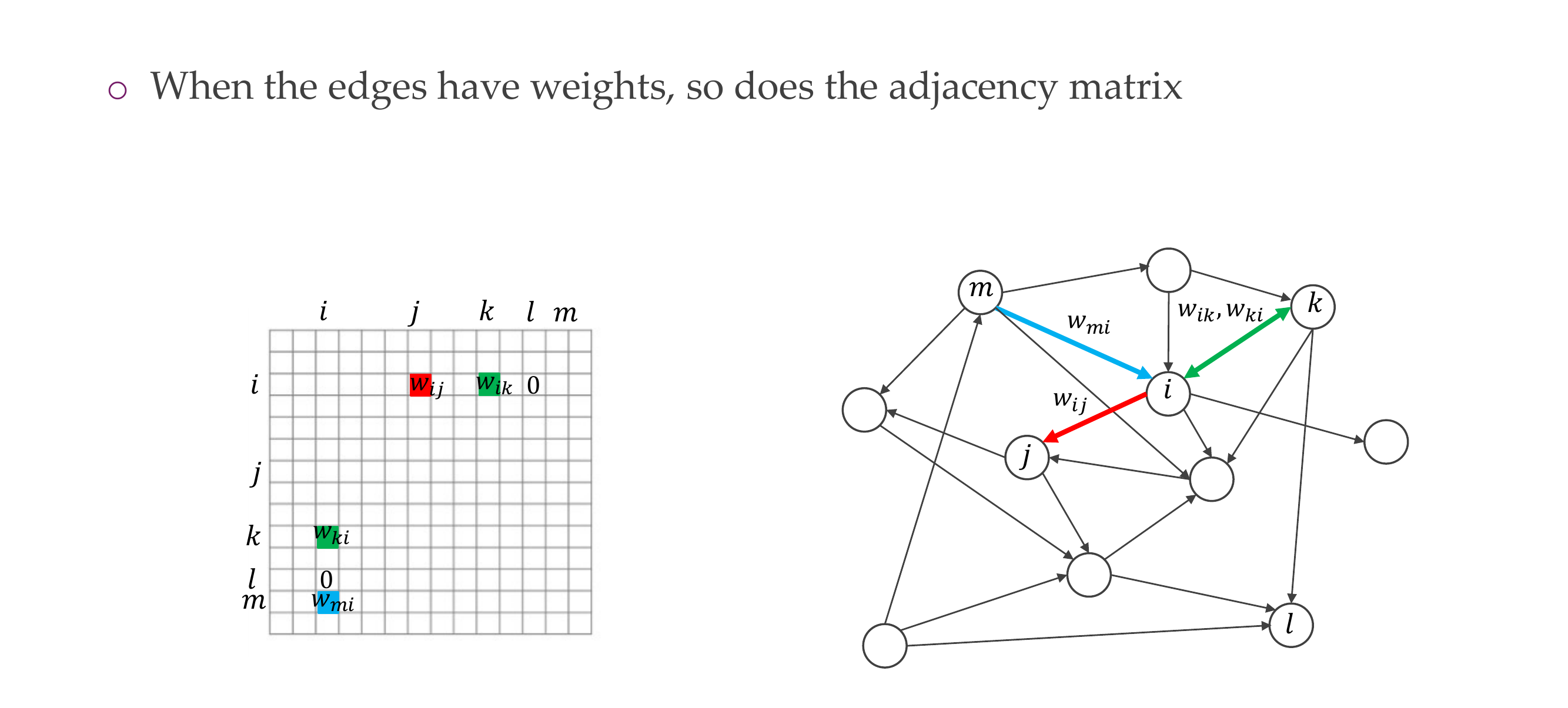
23 Graph representation for us

24 Quiz:
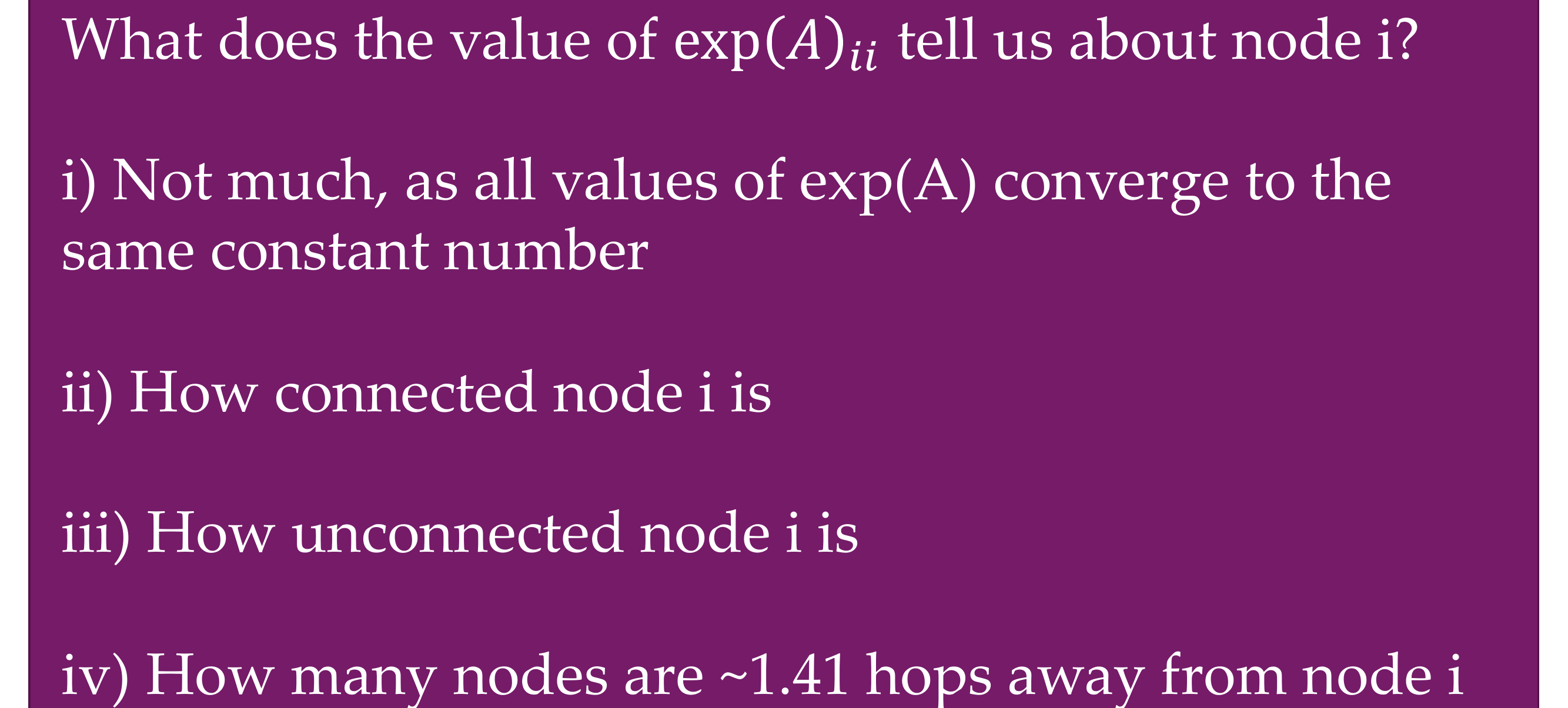
25 Graph Laplacian

26 Graph Laplacian: meaning

27 Applications of the Graph Laplacian

28 Applied Laplacian written out:

29 Title

30 The shift operator, a special circulant matrix

31 Now we want to know:

32 As it turns out: circulant matrices commute

33 What this means: Translation equivariance > circulant matrices/convolutions

34 Where we are

35 Maths: All circulant matrices have the same eigenvectors!

36 All circulant matrices have the same eigenvectors!

37 Circulant eigenvectors © Shift eigenvectors
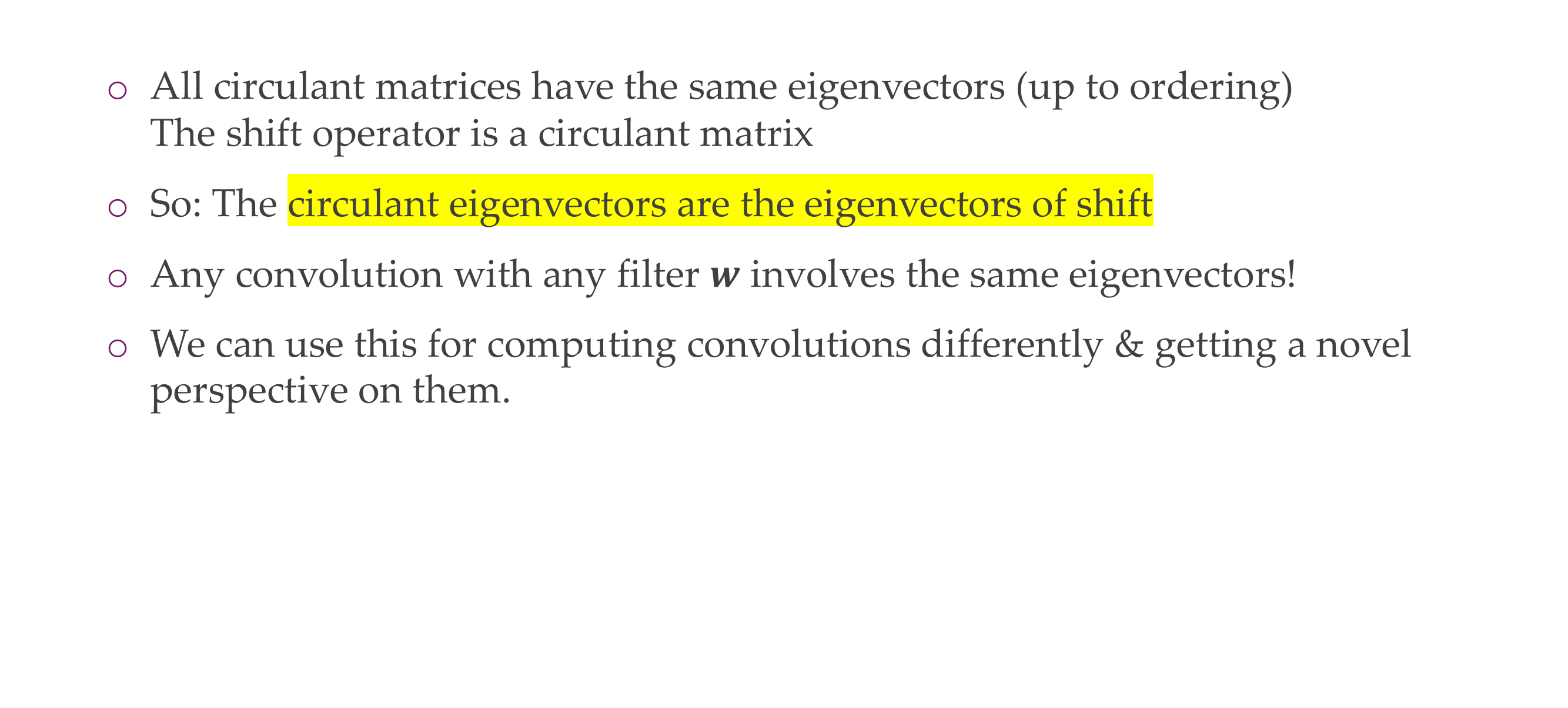
38 But first: What are the eigenvectors of the shift operator

39 Computing a convolution in the frequency domain
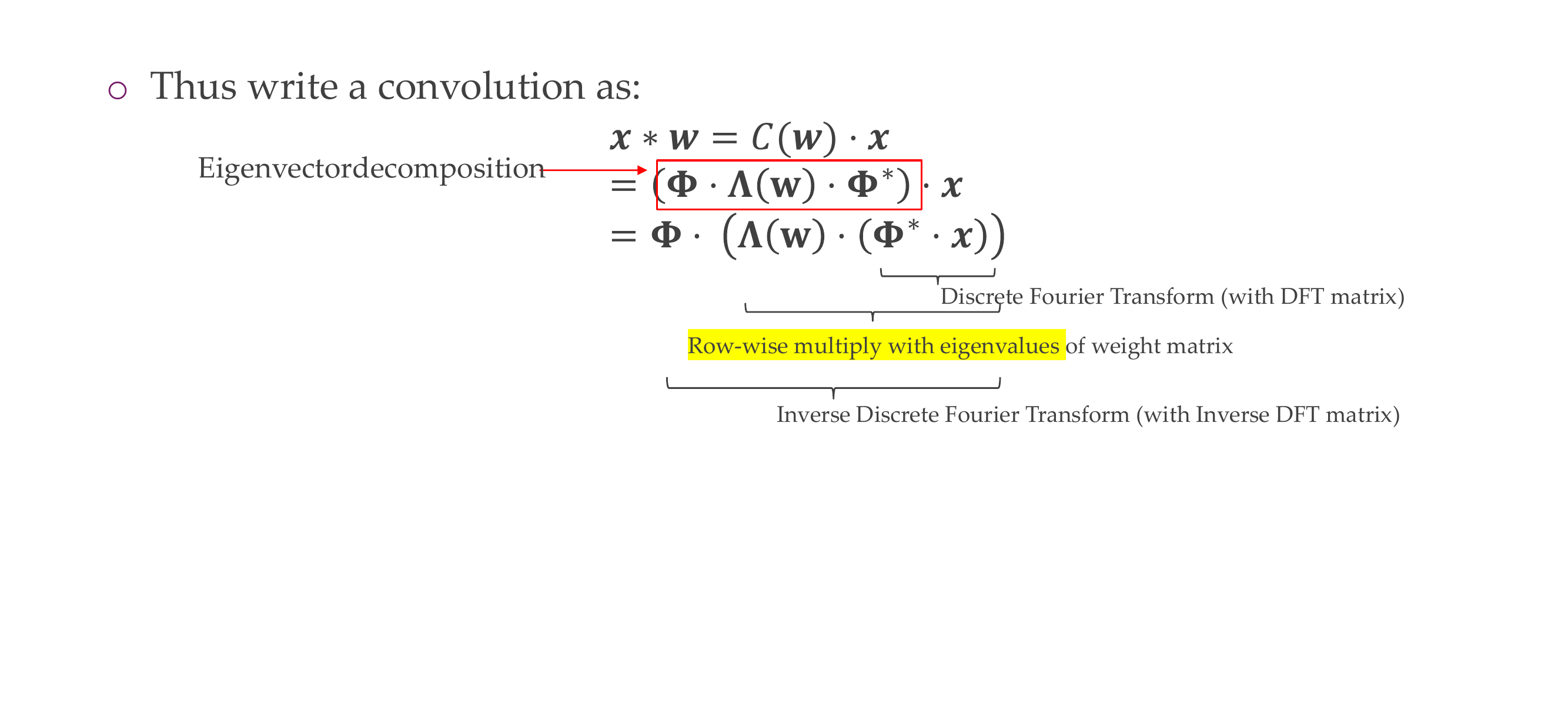
40 Convolution Theorem

41 Convolution theorem

42 Frequency representation:

43 ; Quiz: Remember the Fourier transform for images: |
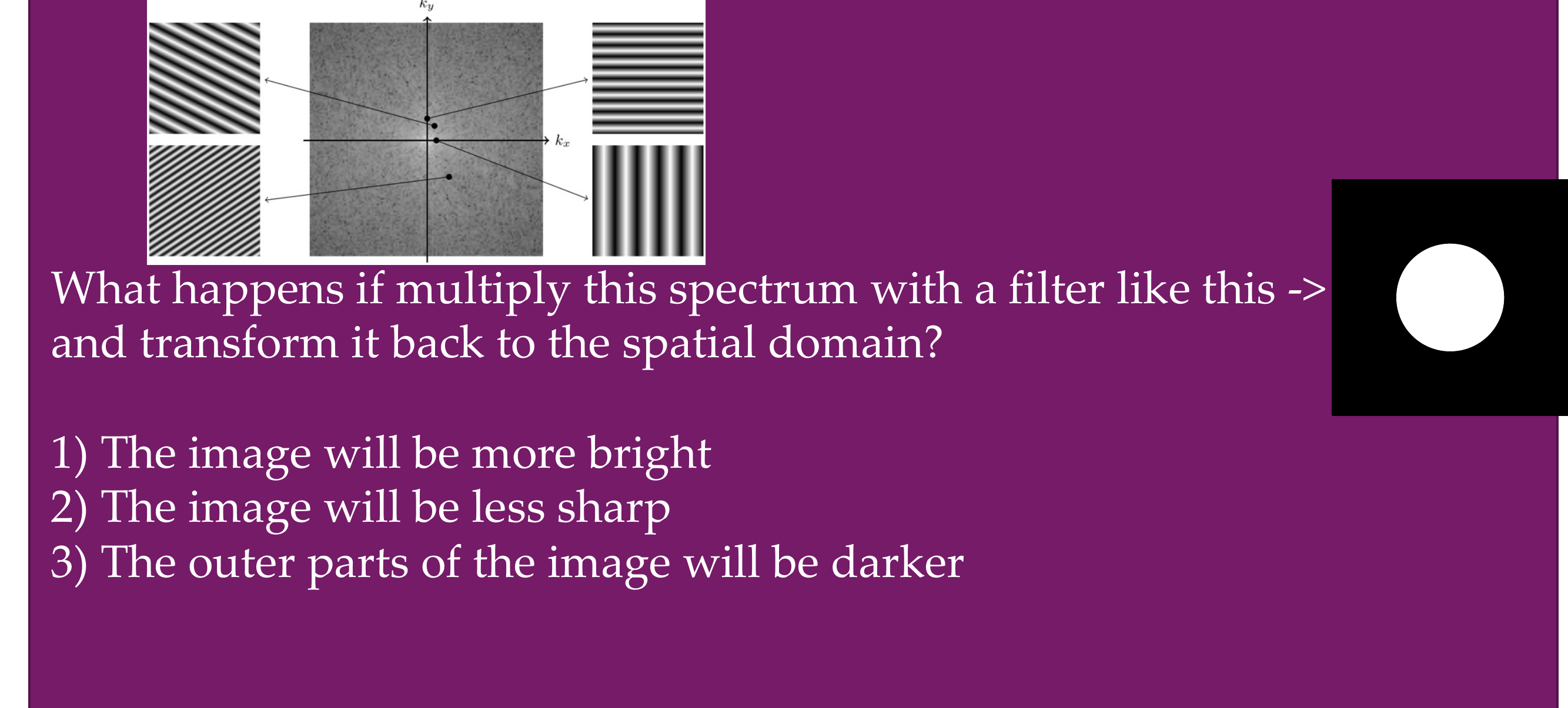
44 Convolution theorem: x * w = ®- (A(w) - (®* - x))

45 Implications

46 If translation equivariance leads to CNNs, what else is there?

47 A large field: Group Equivariant Deep Learning

48 Circulant matrices

49 “I was lucky…
How research gets done part 6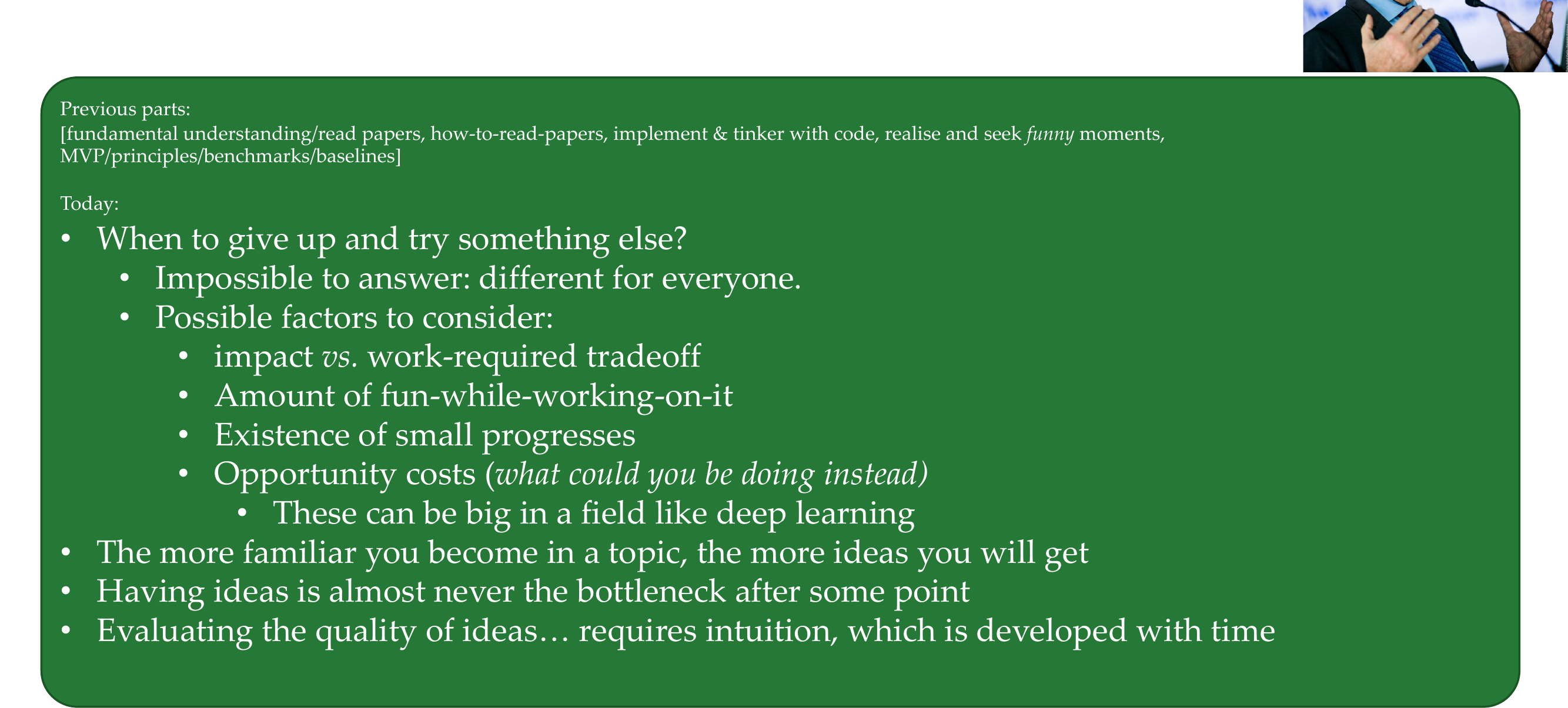
50 Title

51 From convolutions to spectral graph convolutions

52 Approach: Use Eigenvectors of Graph Laplacian to replace Fourier

53 Actually:

54 Further details

55 In analogy to convolutions in frequency domain:
We now define spectral graph convolutions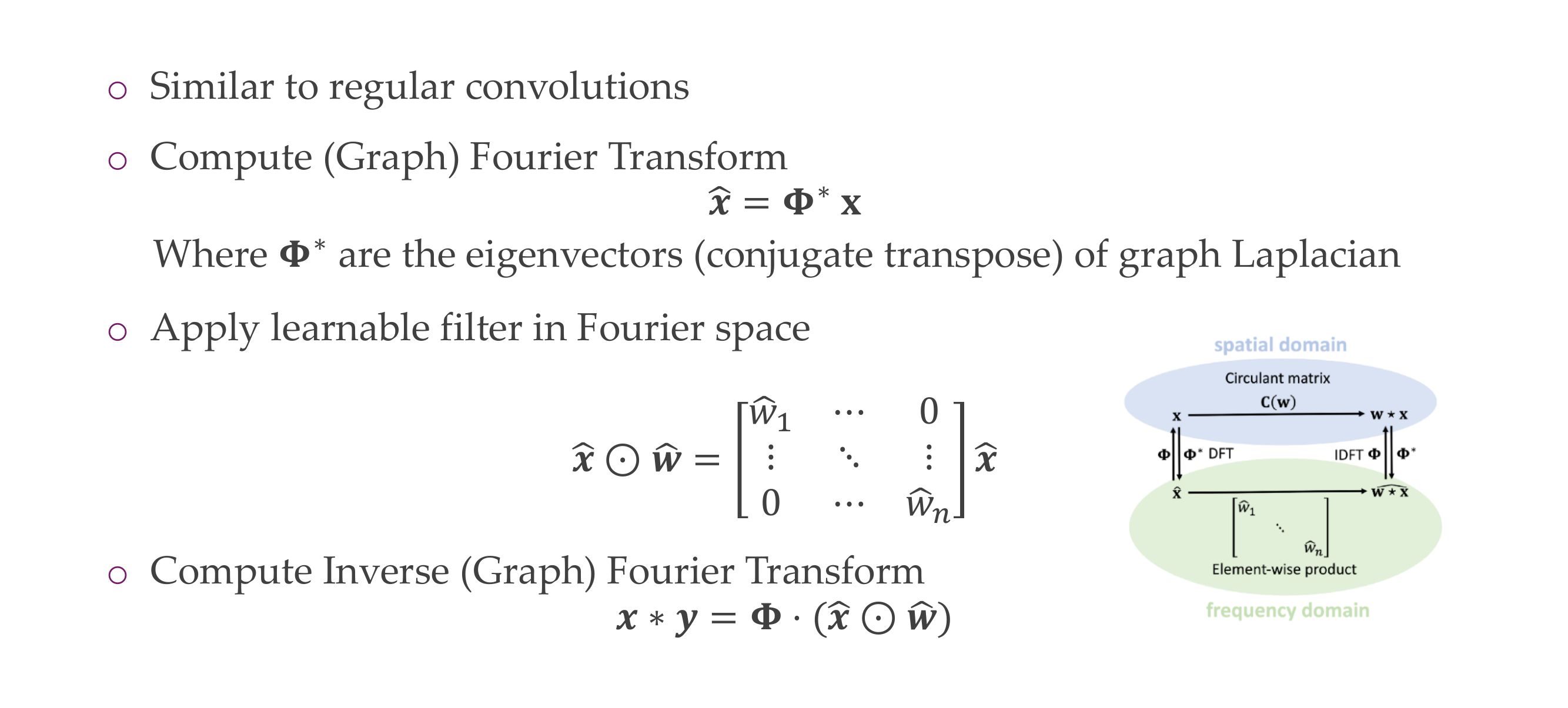
56 Where we are, part 2

57 Why the graph Laplacian*?

58 Spectral graph convolution

59 Some drawbacks of this variant

60 Easy to increase the field of view with powers of the Laplacian

61 Putting it together: stacking graph convolutions

62 . Quiz: What nronerties does this nolvnomial variant have? |

63 Some drawbacks of this variant now

64 Title

65 A FF fF F Fg

66 Graph convolutions
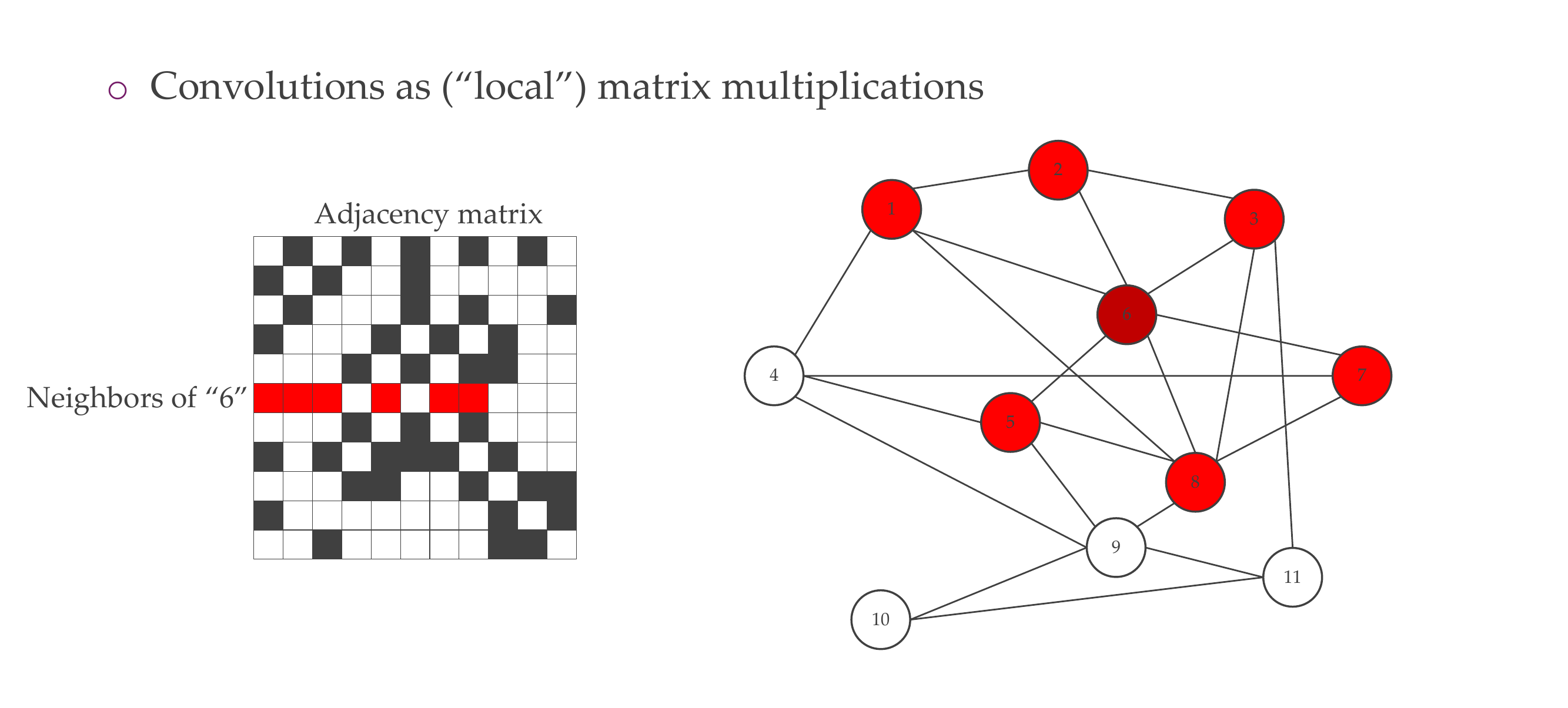
67 What can we use from the spectral approach?
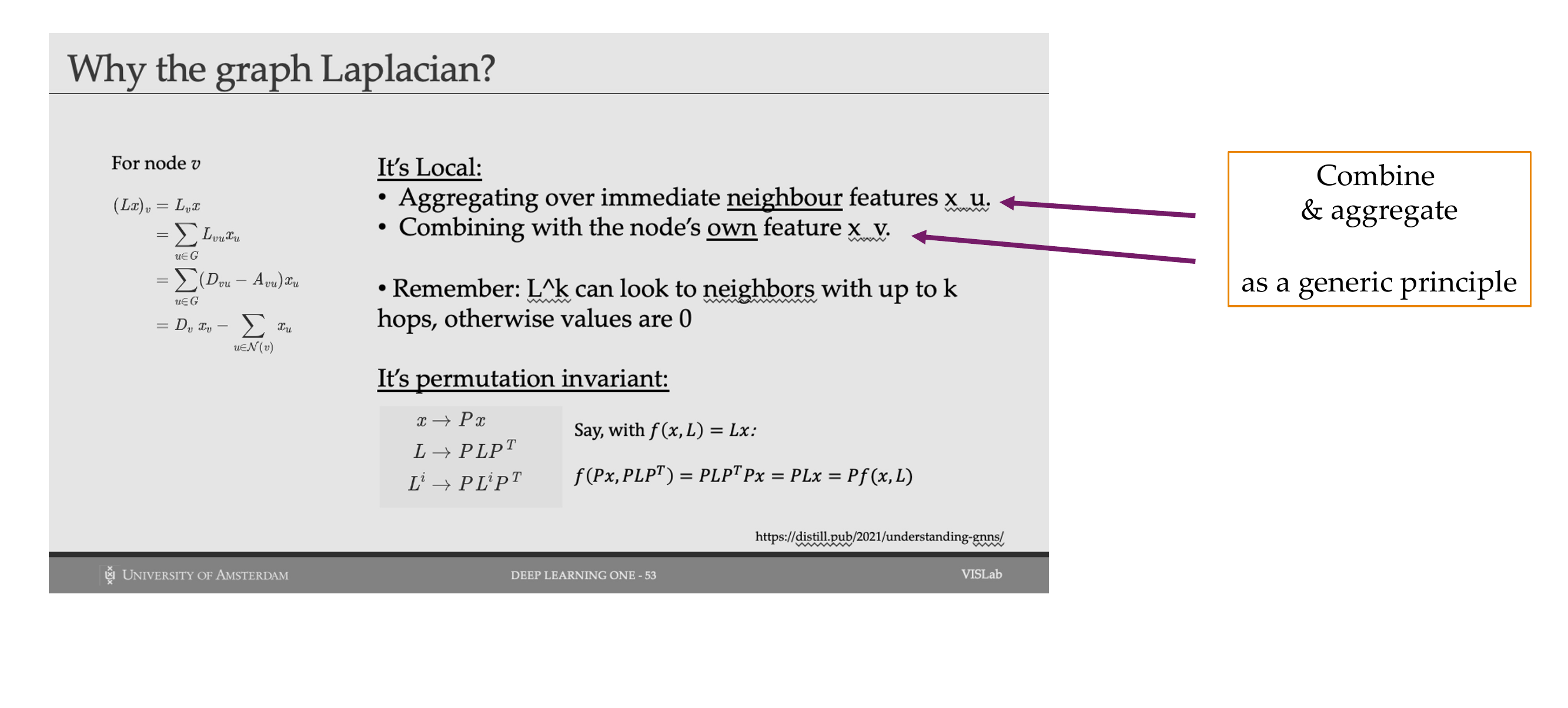
68 Graph Convolutional Networks (GCN)

69 Graph Convolutional Networks (GCN)

70 Putting it together:

71 Other kind of aggregation: Graph Attention Networks (GAT)

72 Self-attention for graph convolutions

73 Connection to transformers

74 Message Passing Neural Network (MPNN)

75 PyTorch Geometric baseclass

76 Overview

77 Finally, a note about coarsening graphs

78 Where we are, part 3
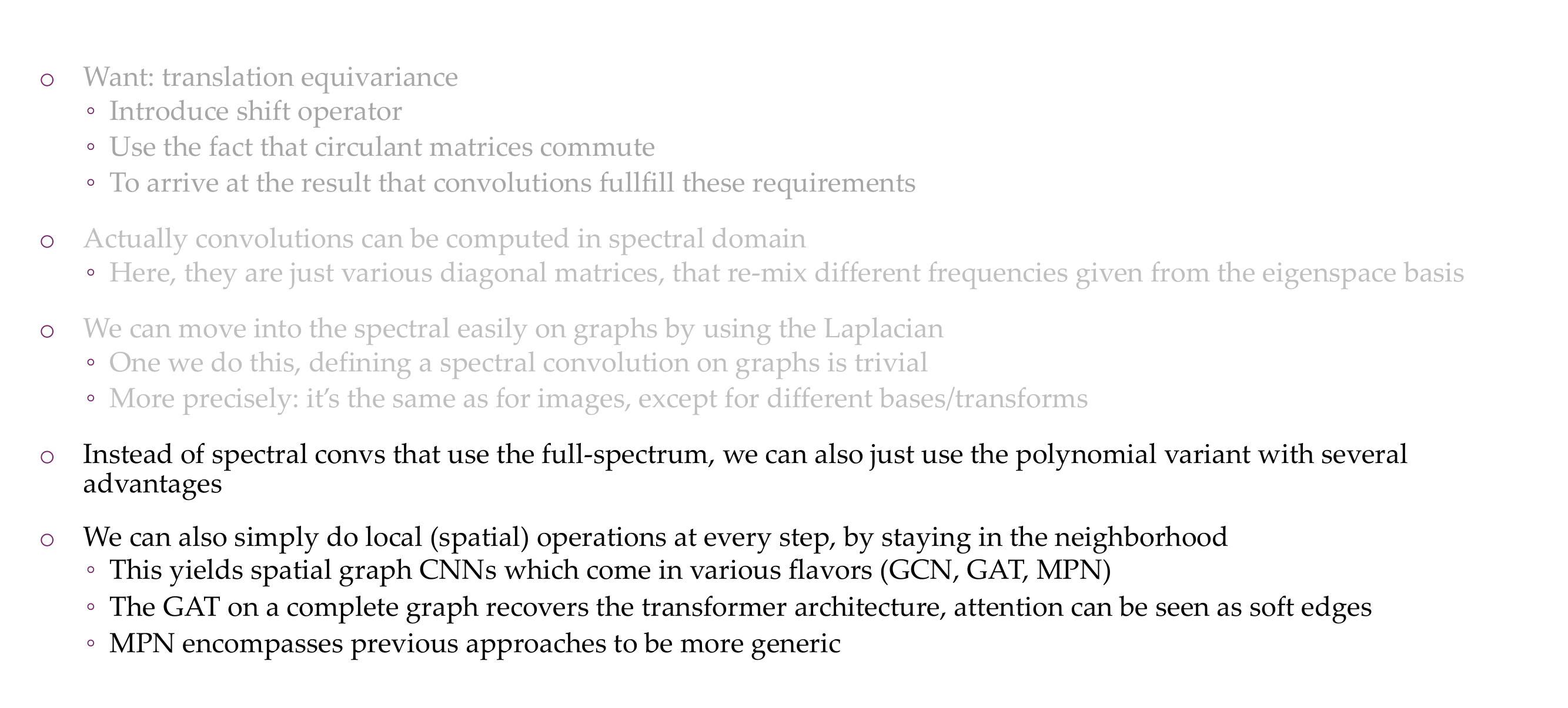
79 The last few lectures

80 Title
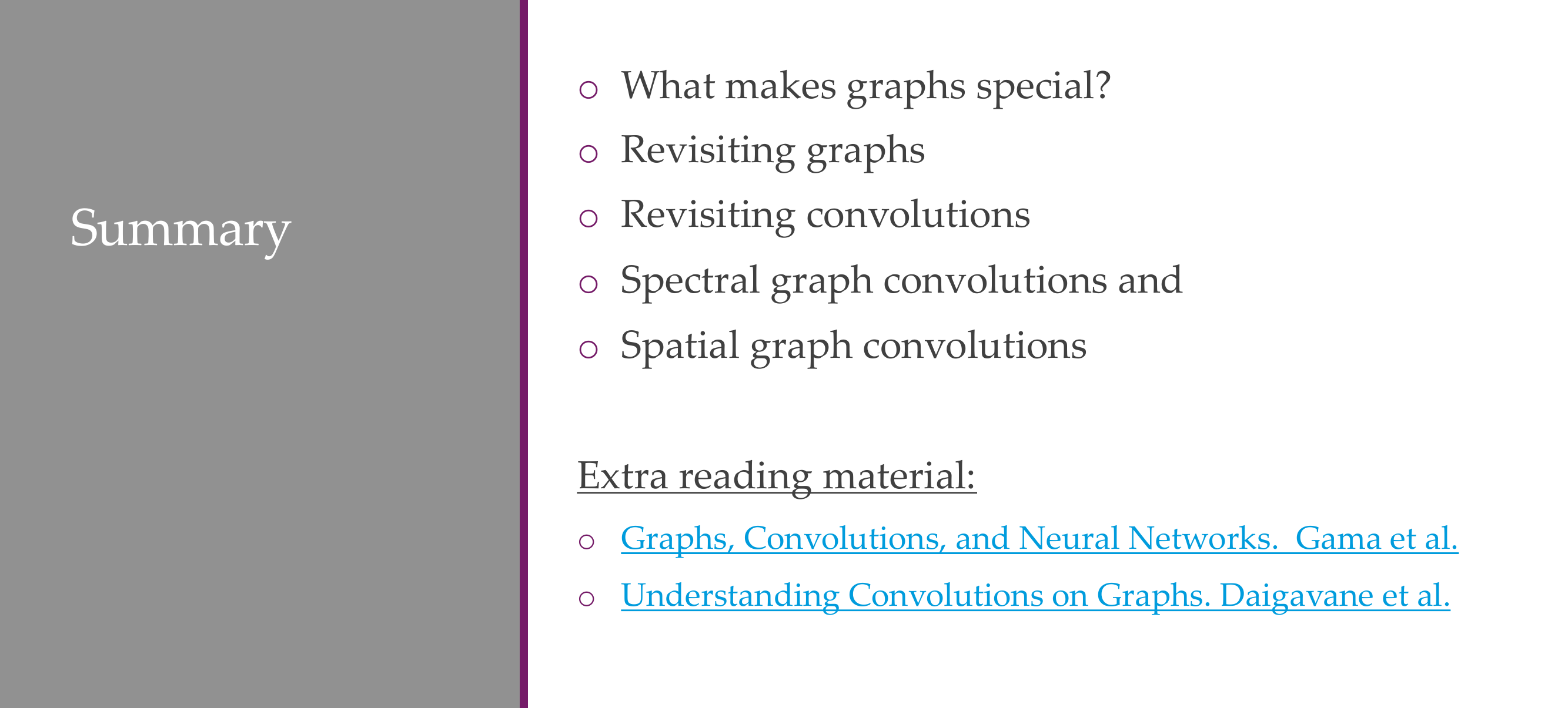
81 Title
